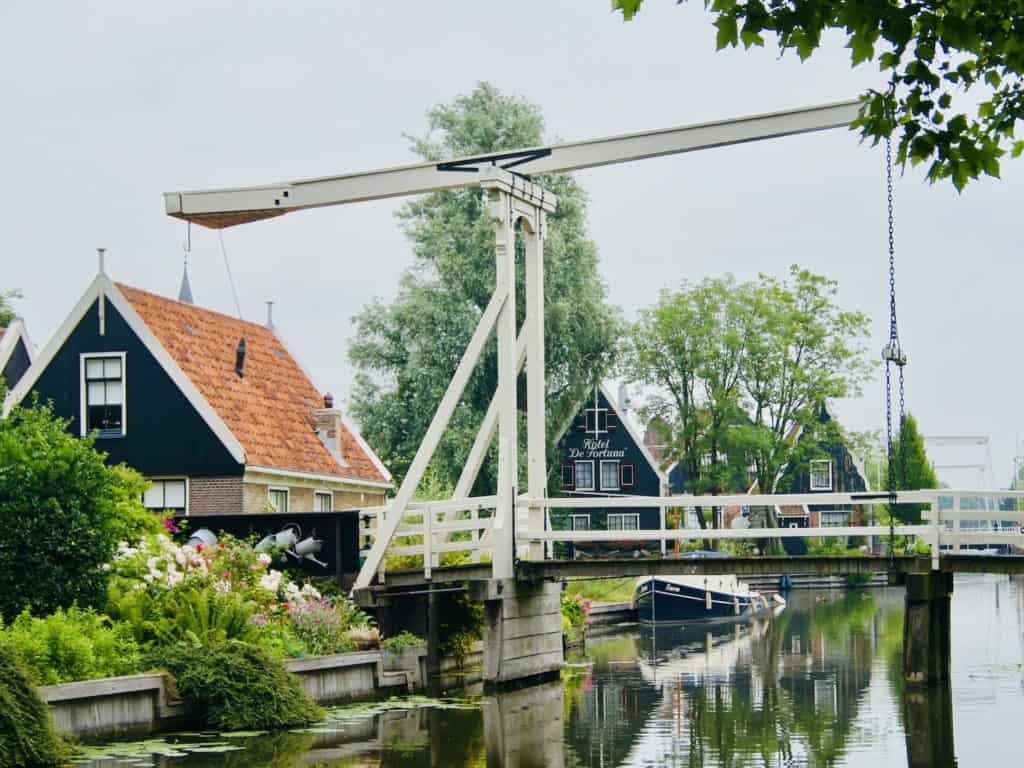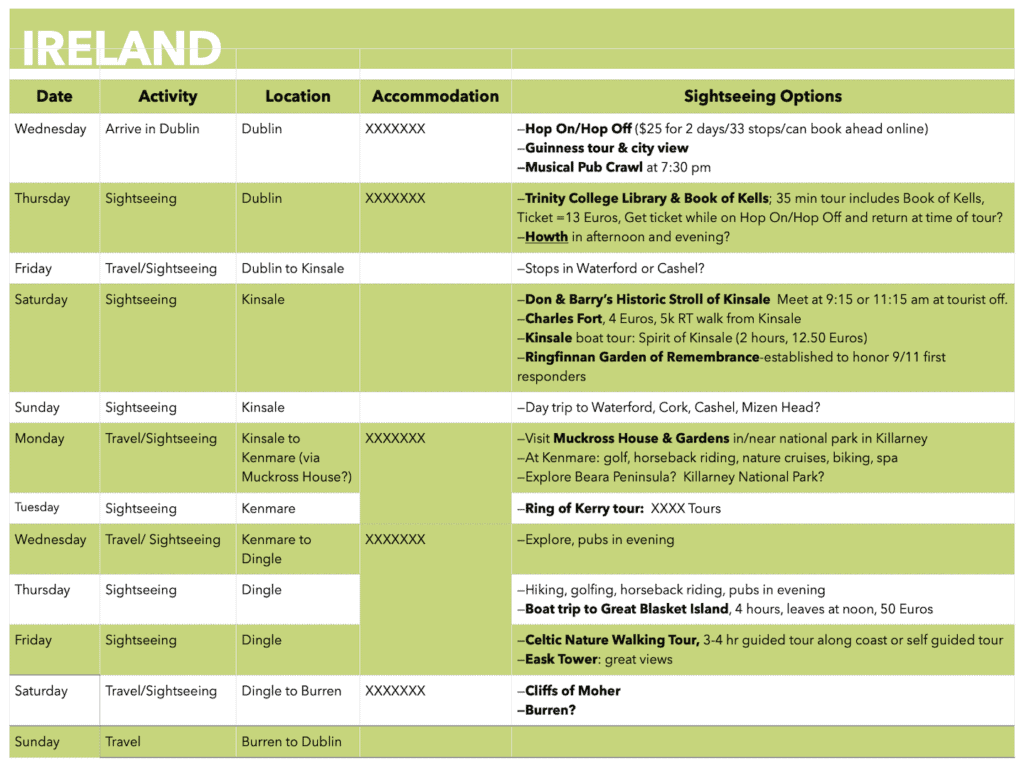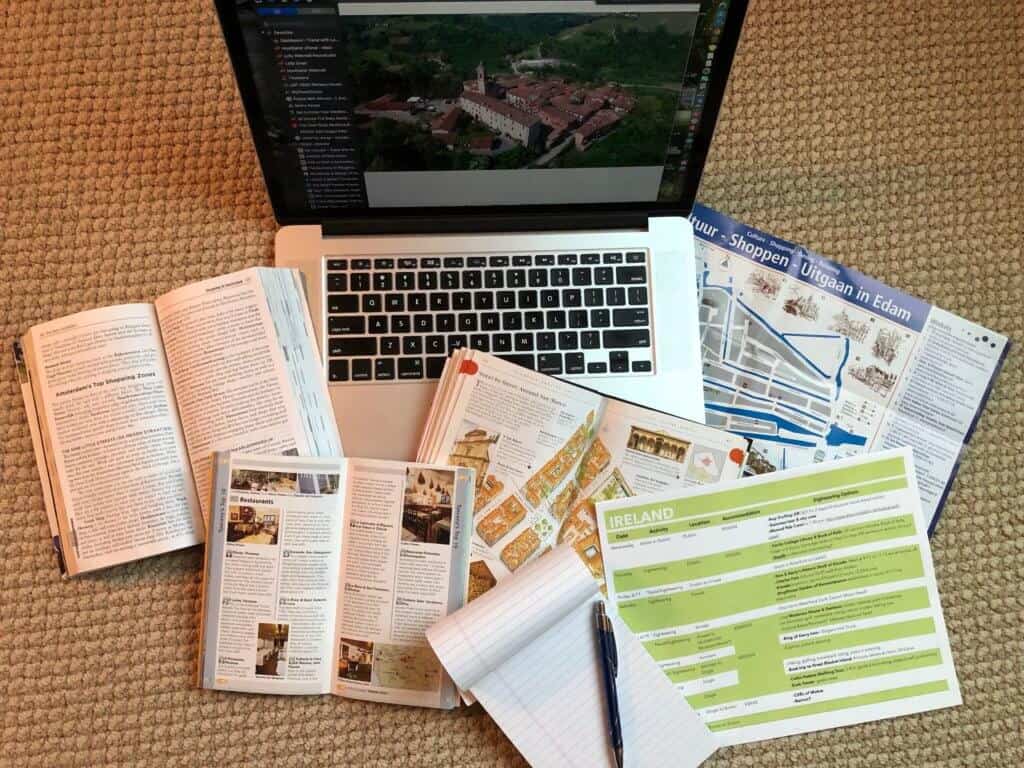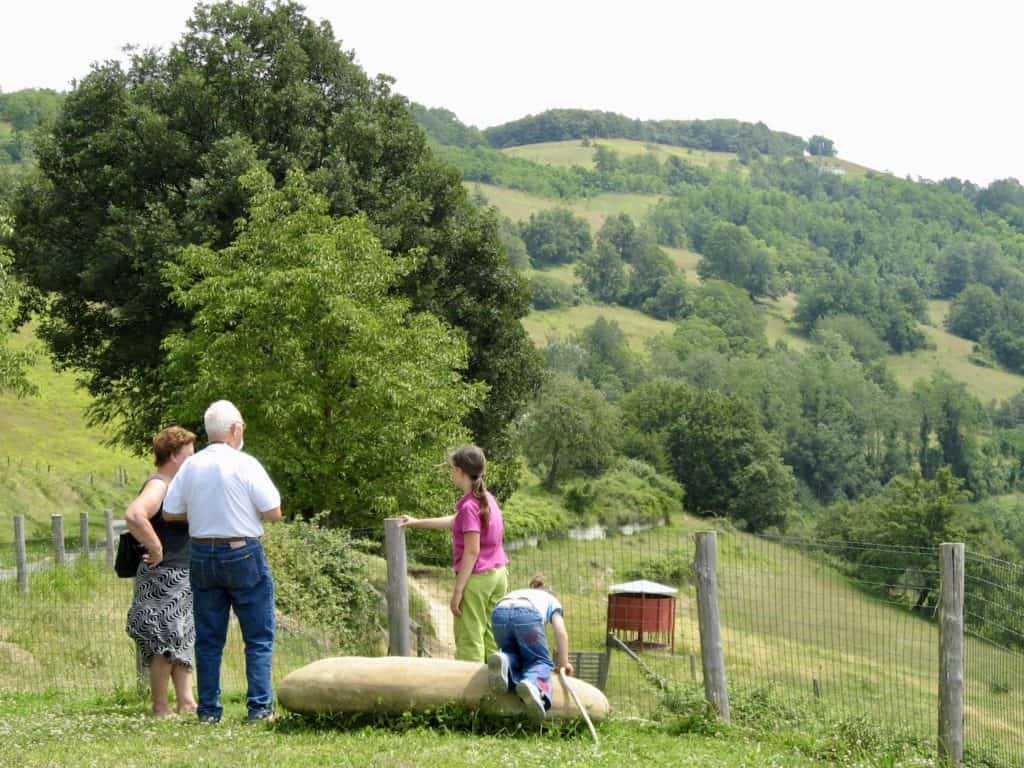The global COVID-19 pandemic has wreaked havoc on the travel industry — and just about every other industry, too. Plane travel alone plummeted over 90% after the COVID-19 virus began to spread and people shunned travel. Joining the drastic decline in demand for plane travel were cruises, train travel, and car rentals as well as hotels and restaurants. Among other things, trip planning became more difficult during the pandemic.
Air Travelers Stayed Home
The numbers say it all: there were just 154,080 air travelers in the U.S. on March 15 of this year; in 2019, there were 1.5 million on that same day. Fortunately, the numbers of air travelers are rebounding and nearing 400,000 a day in the last few days.
Corona Courtesies
Before talking more about travel, I need to take time to share how grateful I am to those who sought ways to help their fellow citizens throughout the pandemic.  Many looked for ways to help those burdened with the ill-effects of the pandemic during our mandatory stay-at home orders. In the early days of the economic shutdown (beginning in most U.S. communities in mid-March), there were so many unknowns. How did the virus spread? What were all the symptoms? Initially, we heard of a few main symptoms. After several weeks, loss of smell and taste were discovered to be symptoms, as well. What else might the experts discover to be risks of the virus?
Many looked for ways to help those burdened with the ill-effects of the pandemic during our mandatory stay-at home orders. In the early days of the economic shutdown (beginning in most U.S. communities in mid-March), there were so many unknowns. How did the virus spread? What were all the symptoms? Initially, we heard of a few main symptoms. After several weeks, loss of smell and taste were discovered to be symptoms, as well. What else might the experts discover to be risks of the virus?
Despite all the fear and uncertainty, people showed many ways of helping others:
- Some made encouraging posters and noise (banging pots or honking horns) to show support for hospital workers at shift changes.
- Volunteers organized and delivered meals from local restaurants to hospitals, virus testing sites, police departments, and fire departments. These efforts helped to support local restaurants. It also showed appreciation for frontline workers and first responders who worked tirelessly to help those afflicted with the virus and who helped keep our communities safe.
- Folks thanked grocery store workers for restocking shelves and checking customers out. In the early days of the pandemic, there were many fears about how the virus spread and how long the virus stays on paper, plastic, and metal — but the grocery store workers showed up to do their jobs.
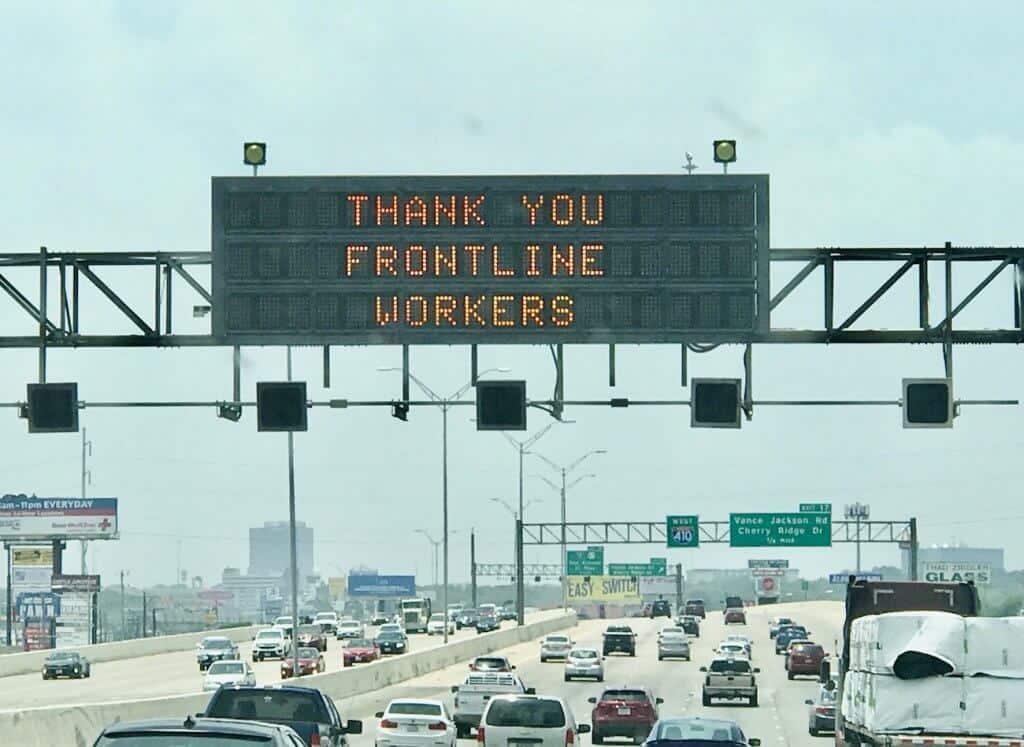
- People ordered gift cards, food, and retail items from local businesses to help generate revenue, and that helped some of them survive financially.
- Some restaurants and retailers offered contactless curbside purchases (such as restaurant take-out food) and deliveries.
- Educators found new ways to connect with their students to maintain social interaction with peers and maintain the sense of community found in the classroom. This was in addition to creating distance learning opportunities for their students.
- People made monetary and food donations to their neighborhood food banks and homeless shelters.
- Parents and caregivers helped children maintain learning experiences at home.
- Friends and families helped celebrate important moments in the lives of others — for birthdays, bridal and baby showers, anniversaries, graduations, and retirements — by creating virtual or drive-by festivities.
- Many delivered their talents and services virtually to an anxious citizenry stuck at home. That included entertainers offering free performances virtually to the public, companies offering free online courses, and museums offering free virtual tours to their collections.
- Religious organizations took their services and activities online to provide spiritual support.
- People shared tips, ideas, and diversions online from how to creatively entertain the younger set while quarantined to posing fun, harmless online challenges that people could do in their homes. We all have to have some fun, right?!
So thank you to everyone who tended to COVID-19 patients and others who reached out to make someone’s day a bit brighter during the stay-at-home orders.
My Recent Plane Trips
In mid-May, I made a trip to visit my daughter’s family halfway across the country when she was about to give birth to our granddaughter. My husband and I had to be there to help care for our young grandson while my daughter and son-in-law were at the hospital.
Planning for the trip actually provoked a lot of thought and second guessing on our part. Exactly what was the best game plan? Should we fly or drive? Which option created less risk in our quest to avoid being infected with the COVID-19 virus? Thankfully, our daughter’s due date, and thus our trip, was scheduled for a time late in the lockdown period. By the time we had to decide how to travel there, much was known about the virus, its probable means of transmission, and definitive ways the public could protect itself when away from home.
Drive or Fly?
At first, we considered driving, but since it would be a 25 hour drive from our home, we decided that meant we’d have to stay in a hotel for two nights of our journey. We had learned enough about germy hotel rooms even in “normal” pre-COVID-19 times to know we didn’t want to risk it. How sure could we be about how sanitary the hotels really were?
Then we looked at flights. When we’ve flown to our daughter’s home before, we had to take connecting flights. We favor Southwest (because of their ease of booking, no fees when changing flights, no baggage fees, and open seating) and connecting flights were a small price to pay for those conveniences. Besides, it’s always nice to be entertained by that friendly Southwest hospitality and humor.
My husband and I opted to drive farther than the normal airport we fly from to make the trip less risky in terms of the virus. The airport we normally use had far fewer flight options than in the past because of reduced demand from the flying public. Also, we wanted a direct flight for our trip of over 1,700 miles. We figured a direct flight would be safer because we would be exposed to less germs than if we took connecting flights (one less plane and airport to deal with).
Where Are All the People?
When we departed in mid-May from Baltimore, the terminal was almost empty of passengers. It was a bit eerie walking from the TSA security area to our gate. We passed few other travelers. Only one eatery was open. Everything was quiet. That outbound flight had only 38 passengers. The airport we flew into was quiet, as well, with little activity and, again, only one open eatery.
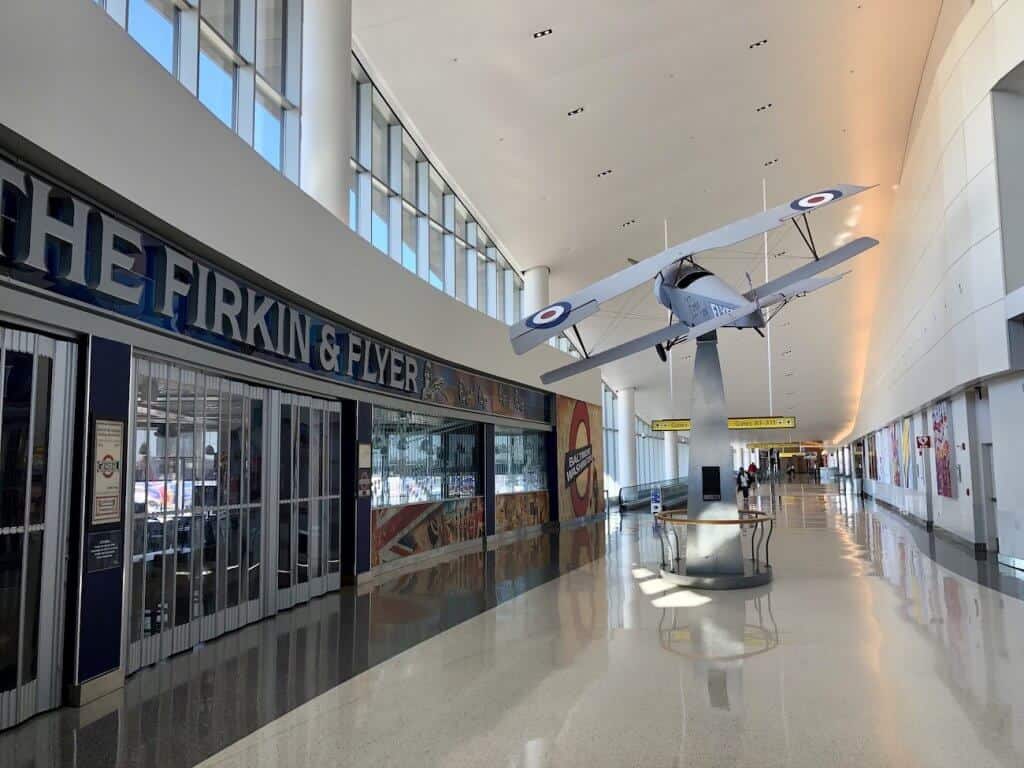
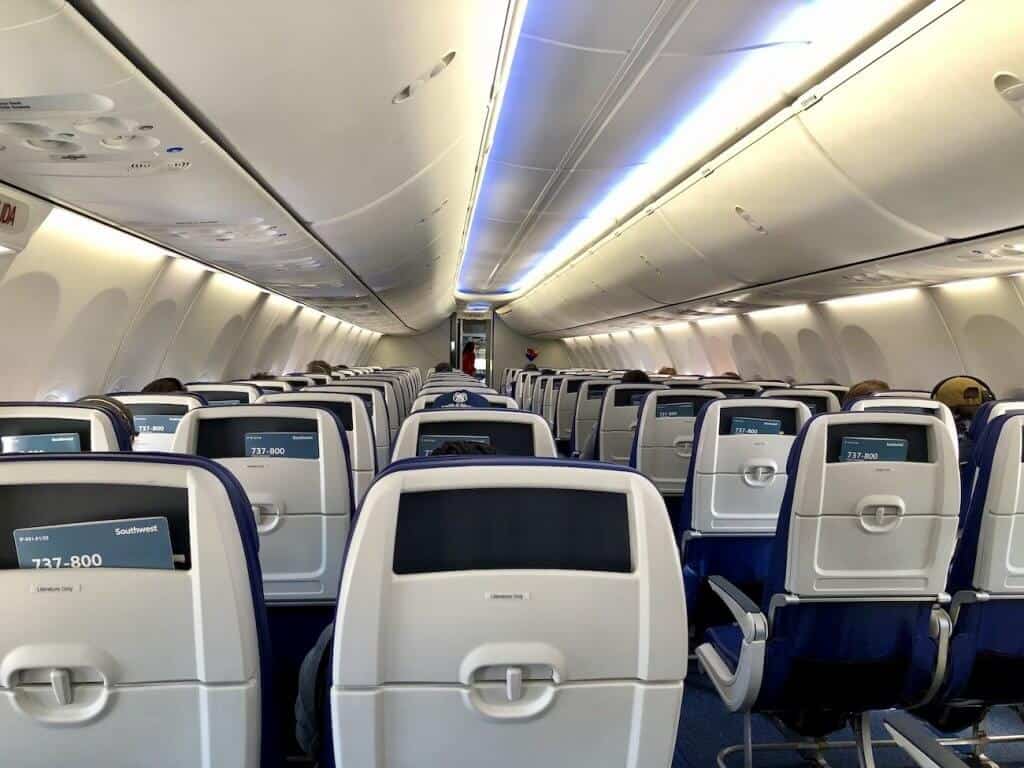
Fast forward three weeks when we flew home the other day. The terminals were a bit busier than on my flight out. Clearly, people were more willing to fly as states began to reopen their economies and many had relaxed stay-at-home and self-quarantining requirements. On the return flight, there were 110 passengers — just shy of the new number considered a full flight. Our Southwest plane had the first and last three rows of seats blocked off as well as all of the middle seats. That left 114 available seats on the aircraft.
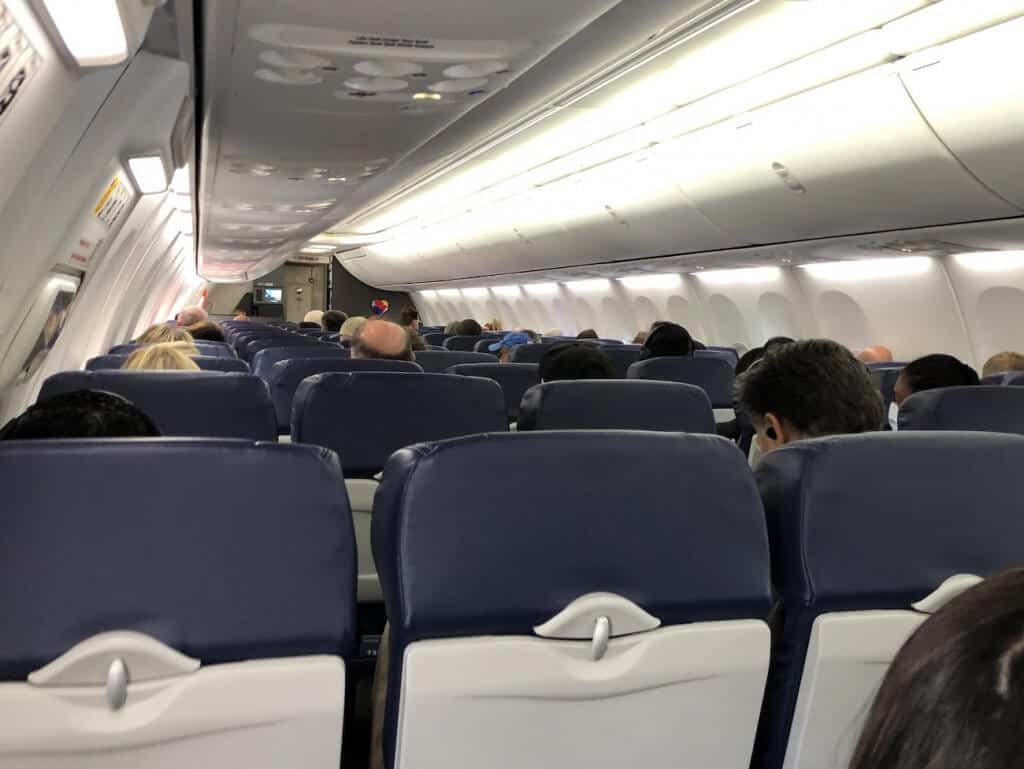
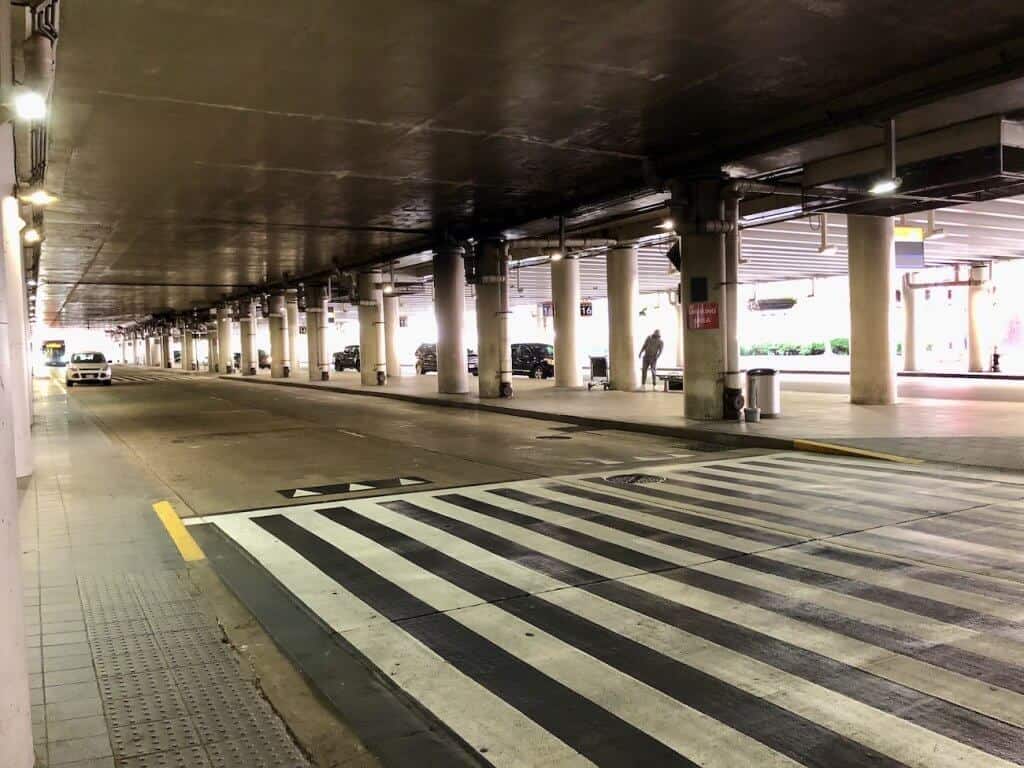
Changes at the Airport
For both trips, there was no separate TSA-PreCheck line as there usually is. Instead, all travelers were funneled through the General Boarding queues. Interestingly, at one airport, my husband and I (TSA Pre-Check travelers) had to take off our shoes and get electronics out of our carry-on bags when going through security — two requirements for General Boarding but not for TSA Pre-Check. For our return flight, we still had to go through the General Boarding line, but we were given a card indicating we were TSA Pre-Check passengers and didn’t need to remove our shoes or unpack our electronics.
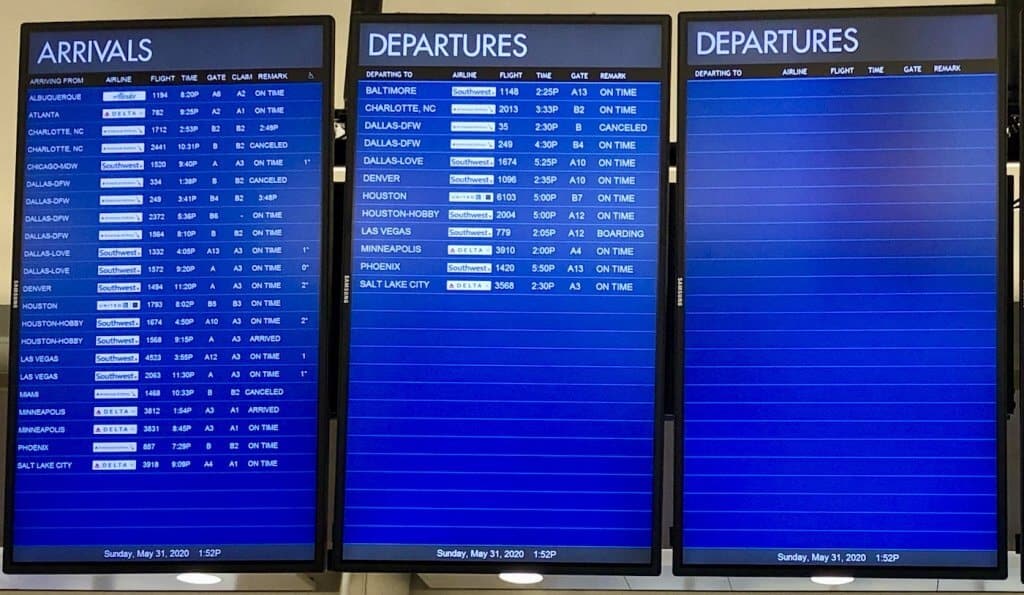
To board the plane, everyone was required to wear masks. If someone didn’t have one, a Southwest gate agent had them to offer. Boarding was done in groups of 10, and everyone was required to stay seated until their group of 10 were called to board. Also, passengers were asked to stand six feet apart from one another — even walking down the jetway and boarding the plane.
Planning Our Next Trips
Those with international travel plans later this year will probably consider other options for the remainder of 2020. My husband and I certainly will. Instead of a highly-anticipated trip to Portugal this fall, we are considering alternatives closer to home. We will limit our travel to domestic spots, and I feel good about that decision. As much as I long to visit Portugal and was excited about the fantastic inns we booked and activities we planned, we will enjoy more of what our great country has to offer instead.
Traveling domestically just feels right now for several reasons. Traveling closer to home means several things. We can more easily manage the hazards of virus transmission since we won’t be spending 8+ hours on an international flight with other travelers, renting a car in another country, and staying in hotels and inns where we really don’t know what their cleaning protocols are.
- We will be supporting our country’s local economies in places we visit. That includes the B&B’s and inns we’ll stay at, the restaurants we dine at, and the places we visit. Since our country’s economy has suffered so much with the mandatory stay-at-home orders, spending our travel dollars here in the U.S. just feels like the best thing to do.
- There are many opportunities to spend time outside in the fresh air, appropriately socially distanced from everyone else — be it hiking in a state or national park or stopping along scenic driving routes.
Flying Soon?
First of all, expect things to be different than air travel in the past. Everyone is more cautious nowadays because there’s still a risk of more virus outbreaks until a reliable vaccine is developed and widely available. For example, what if the virus mutates and reinfects a large portion of our population? So things won’t be business as usual. That much is for sure.
If/when traveling internationally, check on specific travel requirements and/or limitations for the country you plan to visit. I’d suggest checking the U.S. Department of State International Travel site. There you’ll find information and links to learn more about health conditions and other data about your intended destination. Also, consider enrolling in STEP (Smart Traveler Enrollment Program), a free program that sends push notifications on security information from the embassy closest to your destination; these notifications include alerts about planned demonstrations and other potential security issues.

Expect Changes in Air Travel
- Airlines are looking for ways to make most of the check-in process contact-free or touchless. This may include touch-free tagging of bags using apps and QR codes.
- TSA security checkpoints may be different. Recently, the TSA website reported some updated procedures including:
- contactless interactions with TSA officers (passengers show their paper or electronic boarding passes for scanning but don’t hand them over), and
- food you bring on board needs to be in a clear plastic bag and placed in a TSA bin for scanning (not required for TSA Pre-Check passengers) to aid in security screenings.
- Some airports may institute temperature checks and other health screening measures — from simple questions posed to the traveler to new biometric procedures.
- Initially, airlines may offer favorable ticket prices to lure travelers back into the sky. In time, though, they will be increasing their fares because they have to successfully move to financial breakeven and then to profitability.
- Airlines have stepped up their cleaning routines and the HEPA (high efficiency particulate air) filters on board mean that aircraft cabins are more likely to be clean and safe. Just remember to bring your hand sanitizer, mask, and disinfectant wipes. Don’t forget to wipe down your plane seat, armrests, and tray area!
- Flights may actually fill up fast because so many routes have been canceled, and airlines are limiting how many seats can be filled. Many airlines are blocking off middle seats in the interest of social distancing, so capacity on the planes that are flying is reduced.
- Some popular routes that were canceled are returning as the flying public opt to visit family or choose to get away for some R&R somewhere other than home. But these might not return as quickly as some hope.
- Boarding procedures may change. Many airlines are calling just a few travelers/sections of the plane to line up at the gate at a time. All other passengers must wait to be called — no more long lines of people waiting to enter the jetway. Also, some airlines are boarding the back of the plane first to cut down on the number of passengers waiting in the aisles. Check your airline’s website to learn more.
- Some airlines cut back — and even eliminated — food service during the pandemic to lessen the interactions between flight attendants and passengers (and, thus, lessen the potential for virus transmission). Beverage service is slowly returning — in some form — on various routes, although that will vary depending on the airline. Expect what you are offered and how it is delivered to differ from what you’ve experienced in the past.
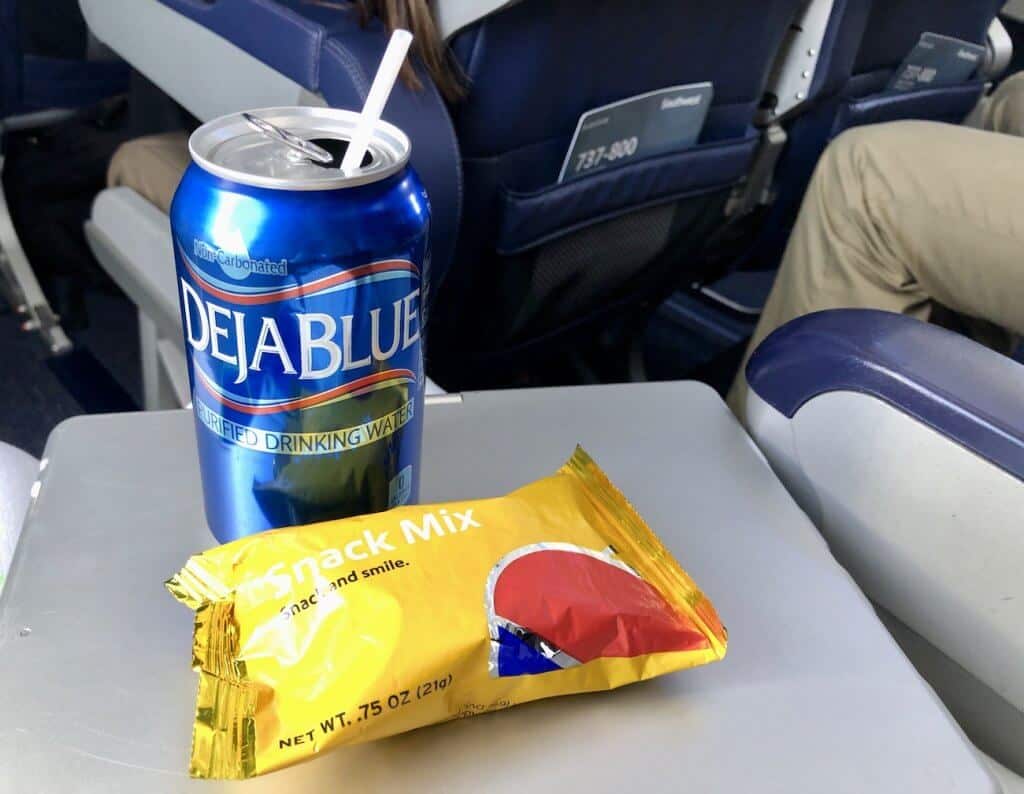
- Lots of venues (such as museums, nationals & state parks, restaurants) have changed hours and/or required reservations due to social distancing requirements. Check all the important places that are “must do’s” on your trip’s itinerary so you know what to expect ahead of time. You may have to juggle some of your plans, but it’s best to know this before you leave home.
FINAL THOUGHTS
COVID-19 created a lot of fear, sickness, and death in our country and around the globe. Travel and related hospitality industries suffered greatly during the mandatory stay-at-home orders. But those of us who enjoy traveling will find ways to explore new places, meet new people, and create new memories. We just have to be careful and mindful of the risks associated with leaving our homes. My hope is that you will rediscover travel for the fun of it plus make new connections with people and places in your favorite locales. Safe travels!
When you do plan to venture out on a trip, check out the post on planning a trip and a handy travel planning timeline. Both should help you make the best of your next trip.
Comments?
If you have thoughts or experiences about traveling in the post-COVID-19 world, please share them below.


